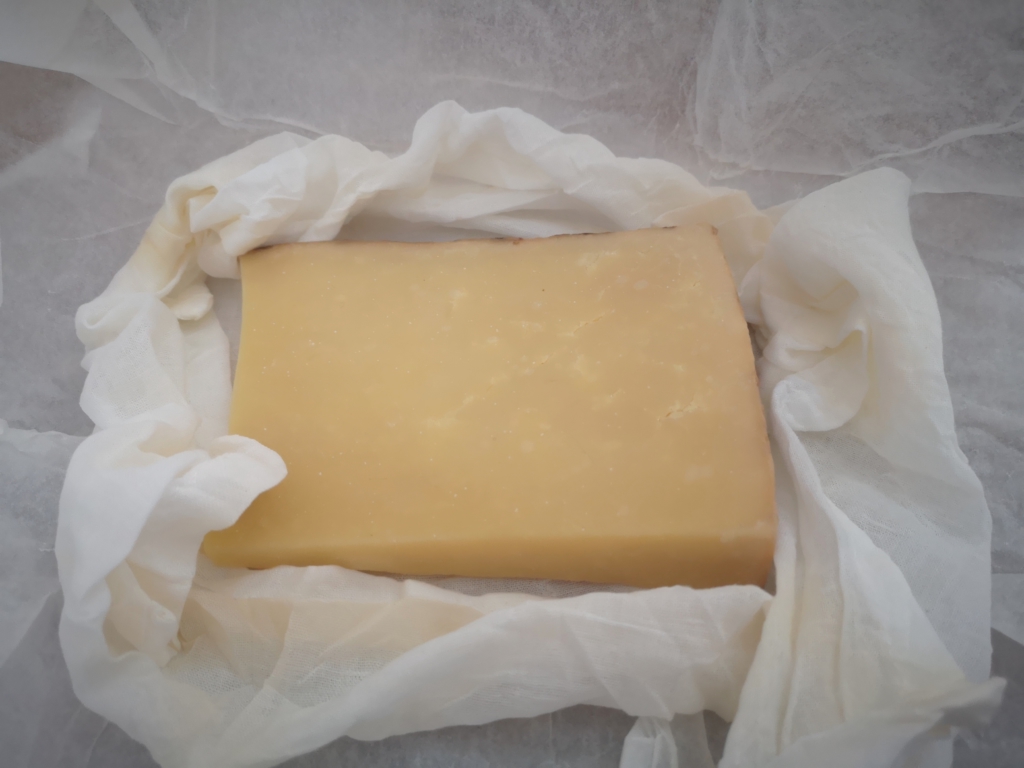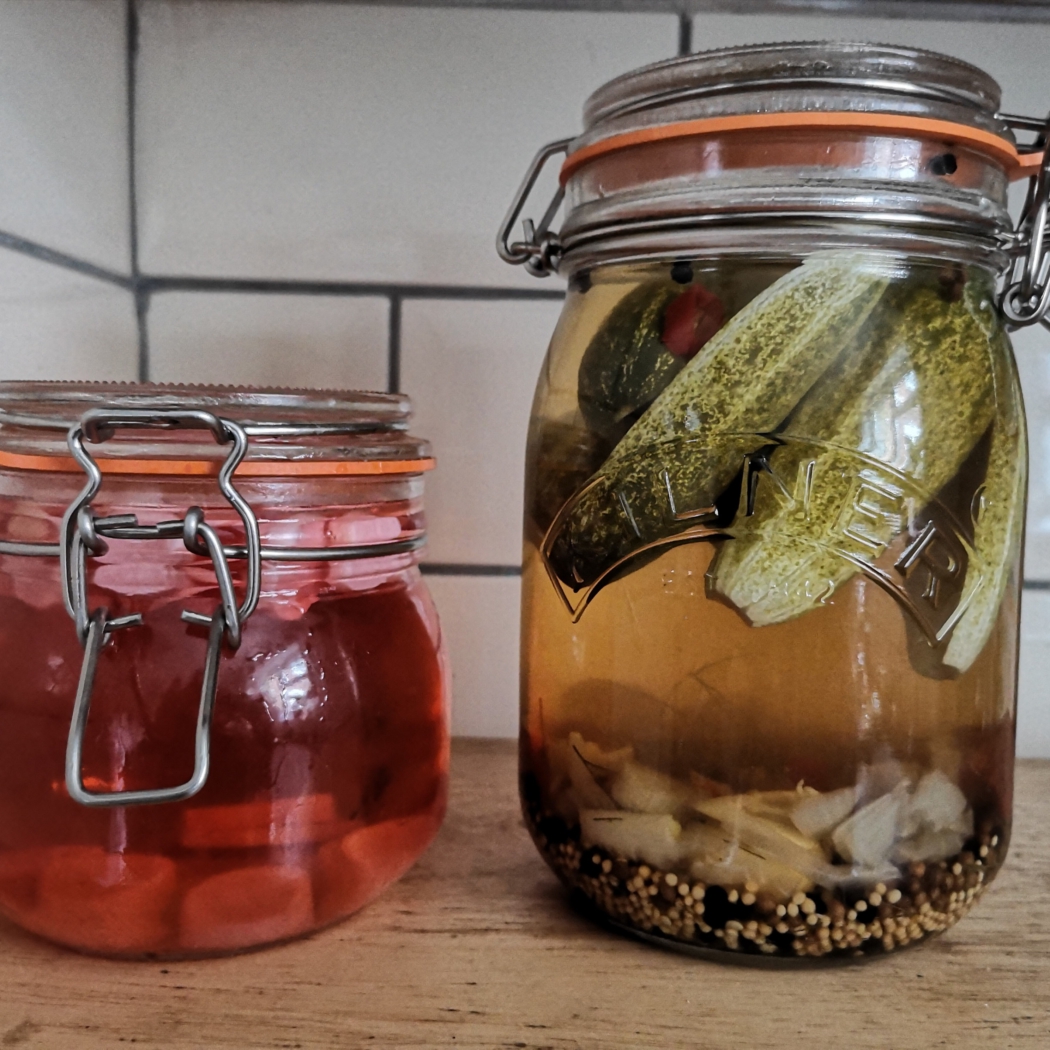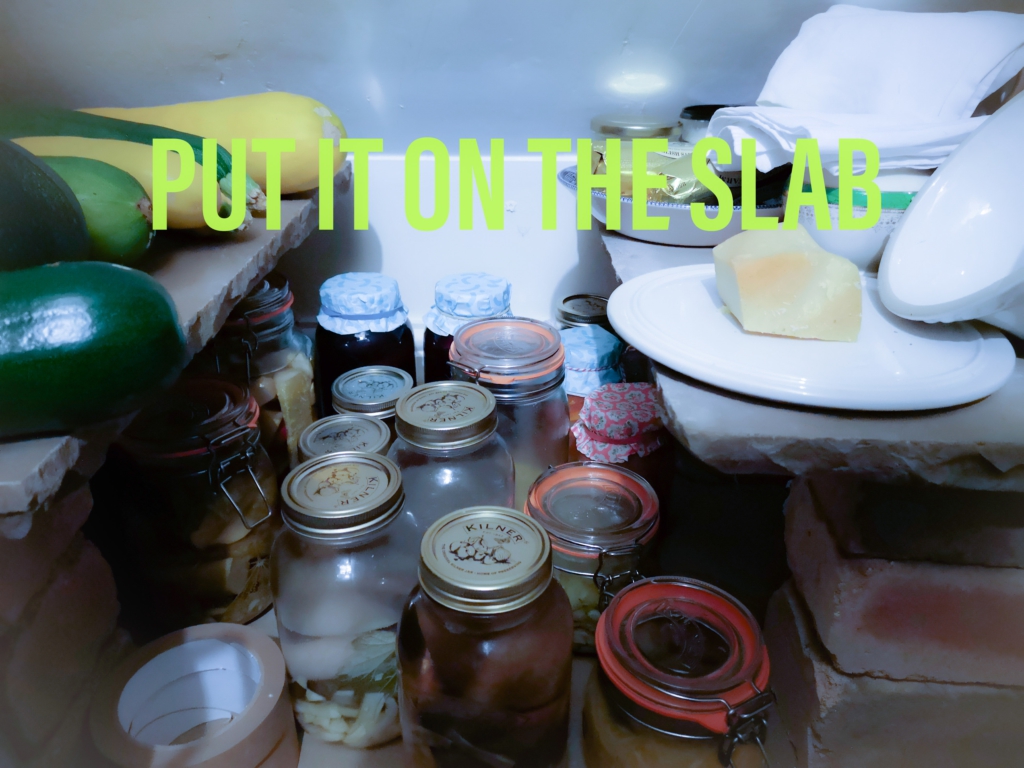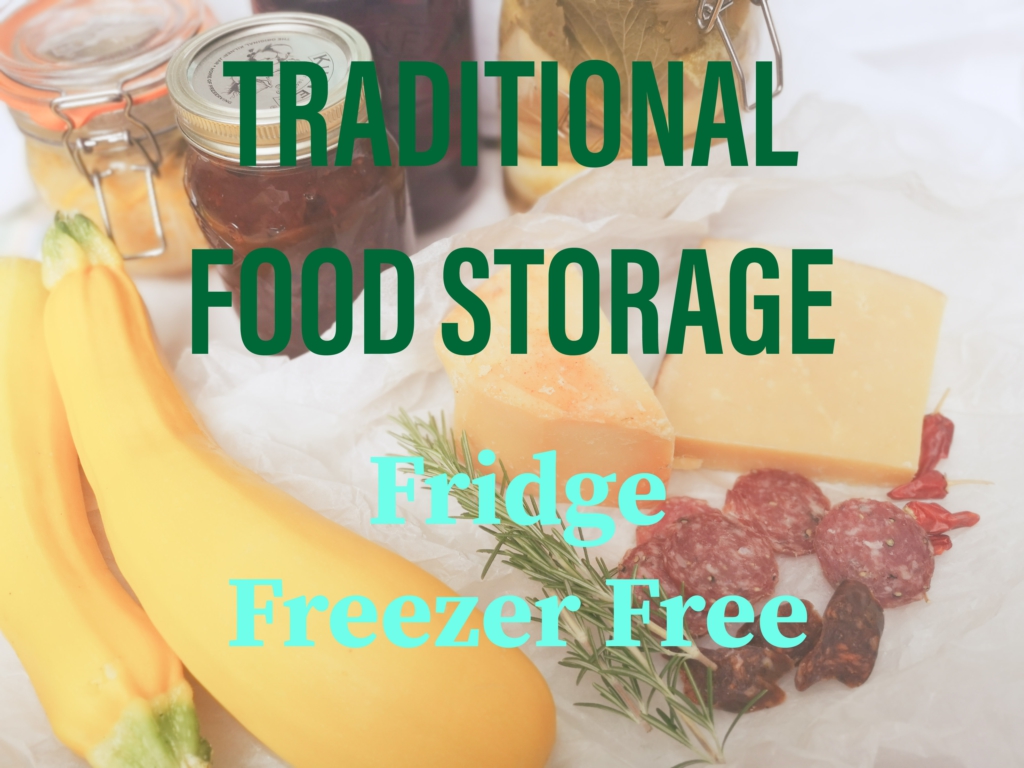Love Your Larder, Pep up Your Pantry – get into traditional food storage, and you’ll think twice about the fridge freezer.
Fancy something salted, pickled, fermented, dried, smoked, potted, cellared, and stored in olive oil or honey? You can find this food all around the world. You can sample all kinds of distinctive foods that reflect local landscape and climate, but even so, you’ll find they share these preservation methods in common.
I’m guessing you’ve probably tucked some in your suitcase (suitably packaged, of course) and brought it back from abroad as a reminder of some ‘special’ food you’ve enjoyed on holiday. But this food was always in larders and kitchens too as everyday food. After all, we’re ingenuous people, and we’ve been this ingenuous for thousands of years. We’ve used these ways to take advantage of a food glut and avoid food waste. And in times past it got us through the ‘hungry gap‘
If you’ve ever wondered how on earth we stored food BFF (Before the Fridge Freezer), all you need to do is look back a few decades. Simple resources – that’s what we used. Plain old air, smoke, salt, fat, oil, gut-friendly bacteria, honey, peat, sand, and more, got us a long way.
Why Traditional Food Storage?
We all store dried food like pasta and pulses in packs and jars in the cupboard, but what about perishable food? Most of us chill it and freeze it, or buy it in shop-bought tins and jars.
We could pot/can, pickle and ferment our own vegetables and fruit, and indeed it’s becoming more popular. If we do, we’re likely to grow or buy more nutritious food for our home preserving efforts. You may be thinking ‘But I don’t have time for that!’ Fear not, for on your doorstep are bound to be people using age-old skills to turn good food into storable food, for sale and for your shelves. This is Farm to Table food, using more natural processing methods.
Even if you can only bring a little of this into your kitchen, it’ll be better for you, keep traditional food processing skills alive, and small family farms in business. Choose carefully, and there’ll be less plastic in the bin too.
I’m thinking of food we’re less likely to store in our cupboards or pantries though – nutrient dense dairy (cheese, kefir and yoghurt) and meat, alongside root vegetables. Even root vegetables (a store cupboard staple) migrated into my fridge until recently, just as I think they have in many homes.

Iconic food
We, in the temperate north, have always based our food around nutrient dense, concentrated food such as aged cheeses, salted, smoked or naturally dry-cured meat and fish. Think cheddar cheese, smoked bacon and haddock, Wiltshire cured ham, alongside simmered root vegetables. These are the more long-lived perishables which preserve or store well.
Have you ever noticed that naturally preserved, room temperature or slightly cool, this food tastes better? Chilling (in the fridge) chills the taste. If you don’t have time for home preserving, then buying the best you can afford of this food is one way to try fridge freezer free food. And along the way you’ll gain knowledge and appreciation of long-lived food culture. Picture your local landscape. The constraint of environment has been the mother of all inventions.

Re-thinking Food Storage
I’ve been as bad as anyone for stuffing the fridge full, not being able to see the wood for the trees, then pulling out a gone-off tub of cream, and a squishy cucumber from the salad drawer.
Lately, I’ve been rethinking food storage. I’ve cleared out a messy and disorganised part of the cupboard under our stairs (the larder or pantry). It’s got me into improving my food storage here. It’s on a cool side of the house, windowless but with a vent. Like many late Victorian terraced houses, it’s next to a covered side alley between our terraced house and the next. It’s slightly cooler and drier in summer, and definitely cold in winter.
I know not everyone has a space like this, but you may be able to think of alternative spaces.
It’s not only food waste that’s brought me back to thinking about this. It’s our rapidly expanding store of preserves made from our homegrown produce. I won’t lie. Growing food takes time and effort, and now, in our house, we’re racing to preserve it. This isn’t for everyone, but it’s satisfying; even when you collapse into a chair after trying to water bath can/pot tomato chutney, whilst cooking dinner. That challenges my mental faculties!
Here’s another reason why I’m raising my game with traditional food storage. At our house, we usually start our food shopping at one of the local farm shops, but the other day I moved on to the supermarket on a blazing hot day.
Burning Fuel in Order to Chill Food
It was 34℃ outside, and as I went through the wide-open doors, the cool air was a relief. As I worked my way through, mentally checking a few things off my list, I found myself going round and round in circles in the chiller section. Lost in the chiller section (as I couldn’t find what I was looking for), I rubbed my hands to warm them up, and shivered.
There were umpteen brands of everything chilled. Yoghurts, cheeses, margarines, butter, milk, ready meals, deli food, readymade pastry, puddings and deserts lined the shelves. And I hadn’t even been near the freezer section. Meanwhile, the supermarket was doing a good job of chilling the customers as well as the food.
It was another exceptionally hot day, for a country famed for its mild summers and typically rainy Bank Holidays. Picture the folks on the beach, reaching for their jumpers as the temperature drops and the rain clouds sweep in. There’s tutting and muttering about ‘British summers’. Yet, we always have had hot summer days, and on these days, we burn fuel in order to store food.
Spread Some Store Cupboard Love
We’re so used to our fridges and freezers. They’re imbedded in our culture since they migrated into homes over the last 50 or 60 years. At least, they are in first world countries. Yet there are still many people worldwide who preserve and store their food according to ancient traditions. We may see this as ‘lack of a better option’. But is that really the case?
What if we embraced traditional food storage more and retreated away from fridge freezer-dependence? I don’t imagine that if someone like me asked that question, we’d suddenly find fridge freezers turning up at household recycling centres around the country.
But where might it lead? How far would you go? Here are some What Ifs:
- What if we divert some food storage into the pantry and keep our fridge freezers lightly stocked so that we can see the wood for the trees? How much would this reduce food waste?
- How many people would downsize from a large fridge freezer to a smaller one, or just a fridge, or even a mini-fridge or solar fridge? That would need less energy, and the goods would have a smaller embedded carbon footprint.
- How many people would ditch the fridge freezer altogether?
We have a fully-functioning fridge freezer. So, it goes without saying, that if we eventually downsize, we’d find a second home for it (we’d sell or donate).
Declutter or Downsize Your Fridge Fridge Freezer
What can we take out of the chiller section to declutter or downsize? Butter, cheese, yoghurt, jam, fruit, all vegetables, lard, dripping, dry-cured and smoked meat. Release them from the chill and the freeze.
You might find some of these surprising, particularly the vegetables. But did you know that the spoilage rate of fruit and vegetables that have never been refridgerated reduces by 50%, if kept out of the fridge? And when it comes to purified and naturally concentrated fatty foods, their lifespan can be surprisingly long in a dark, cool space.

Put It on the Slab
Pantries usually had a cold slab on which to store food that needed to be kept cool the most. You’d see a slate, marble or other stone shelf in a pantry or larder. We happen to have sandstone slabs left over from renovating our kitchen floor – that floor sure is cold in winter; and it’s less than ideal, we’ve discovered. I’ve used these leftover slabs for now, but they won’t be as easy to clean as a smooth marble or slate surface.
I simply raised these on bricks, which I thought was a rather Heath Robinson approach, but it seems that cold slabs were normally supported on brick pedestals in a Victorian pantry, as described by Mr Victorian. My shelves are quite low too – also normal for a traditional pantry. So, I ended up with something like a traditional pantry, without even knowing this.
Ditch the Fridge Freezer?
Even if we moved this food into the larder or pantry at home, it would take systemic change to shrink the chiller sections of the supermarket. That comes down to how food is stored and served in supermarkets and shops. What would help is looking out for places to buy that don’t keep as much food out in fridges. If we all relied less on chilled and frozen food (nearly always plastic-packaged), would the chiller zone of the supermarket reduce in size?
If you’ve thought about ditching the fridge freezer altogether, read Prepping Your Pantry: How We Store One Month of Food Without a Fridge or Freezer, from Cheryl Magyar of Forest Creek Meadows. If you can, rely more on cooking and baking; learn to can, ferment, dry herbs, forage, and more.
Coming up on the blog: Burying your root vegetables in sand or compost, storing aged cheeses and charcuterie in the pantry….
I hope I’ve encouraged you to want to Eat Like Your Ancestors. That’s the title of my new book, centered on a journey around where I live, but it’s relevant anywhere. And, it’s out now…


